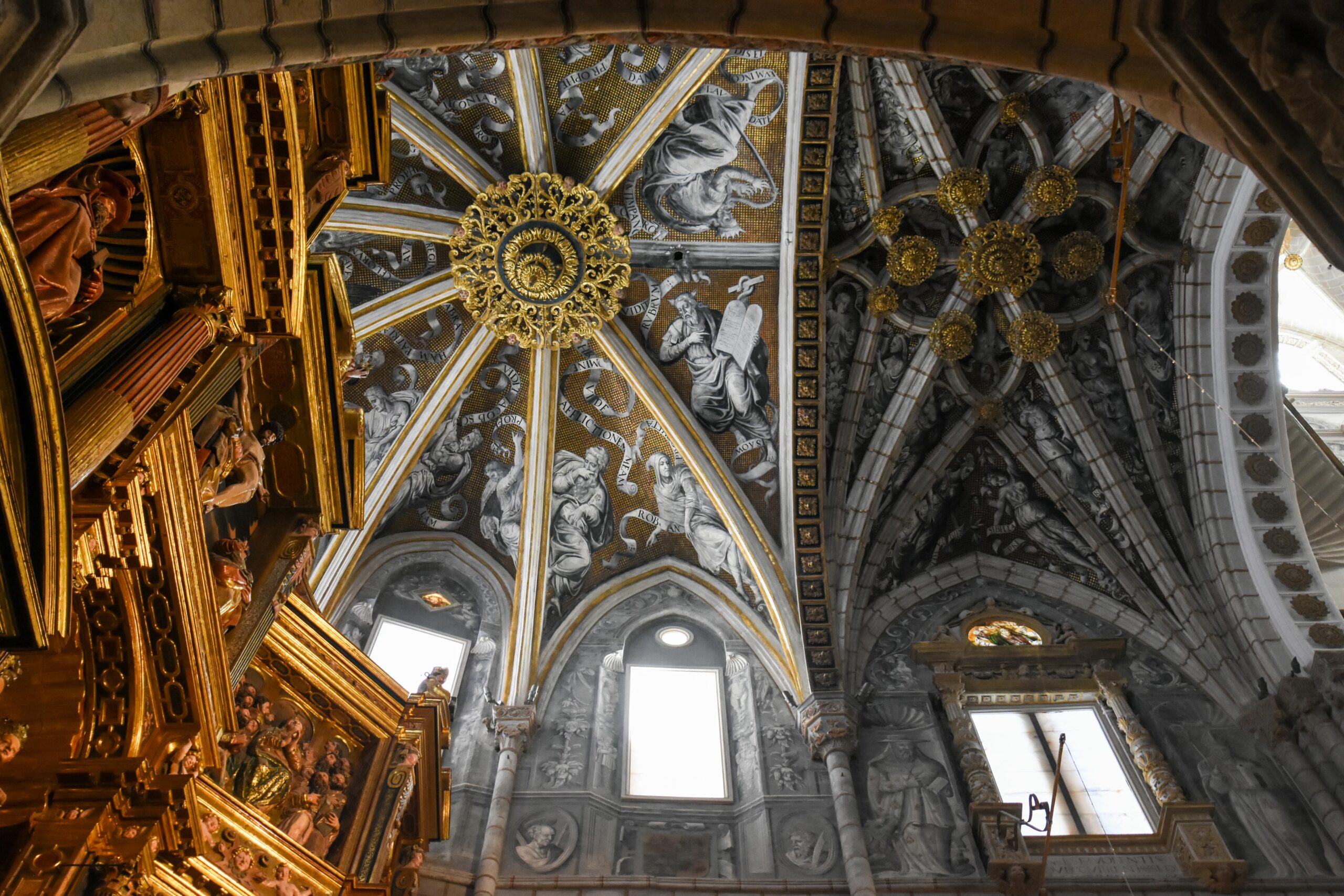For the past six years that I was to visit Zaragoza, as my great friend and travel companion in southern Mexico and Guatemala, José, lives there. Finally, our calendars lined up and I was able to spend three days exploring Zaragoza and the rest of the week in other nearby cities (Tarazona, Teruel and Cuenca). This post contains tips on what to see in Zaragoza.
.
I took a night bus to Madrid and from there another one to Zaragoza. Thirty-six euros and fifteen hours later I was arriving in the capital of Aragon. We went by bus to José’s house, where we had lunch and already (for me) late, we went for a walk around the city. As much as I’m used to cultural differences, I don’t think I’ll ever get used to the Spanish siesta. This idea that everything closes until 5pm makes me some confusion and doesn’t let me enjoy the cities as I like, almost non-stop, without spending hours eating, which in Spanish cities they “force” us to do.
.
José is an art historian and it’s a pleasure to visit a city with him, because he tells us everything he knows and what he doesn’t know (with the help of the internet). We descend on foot to the Casco Antiguo, passing the beautiful and historic Basilica of Santa Engracia.


When looking at Zaragoza from an aerial view, it is very easy to identify where the walls of the Roman city of Caesaraugusta were located. From there we went to the Square of Our Lady of Pilar, where the beautiful and imposing Basilica with the same name is located, as the Town Hall, the Museum of the Forum of Ceasaraugusta, with its incredible alabaster façade, especially beautiful at night, and the Cathedral of the Savior, also known as Seo. The latter was my favorite, with its impressive Mudejar side façade, contrasting with the Baroque façade. It is also here that the Tapestry Museum is located, which we would visit two days later.



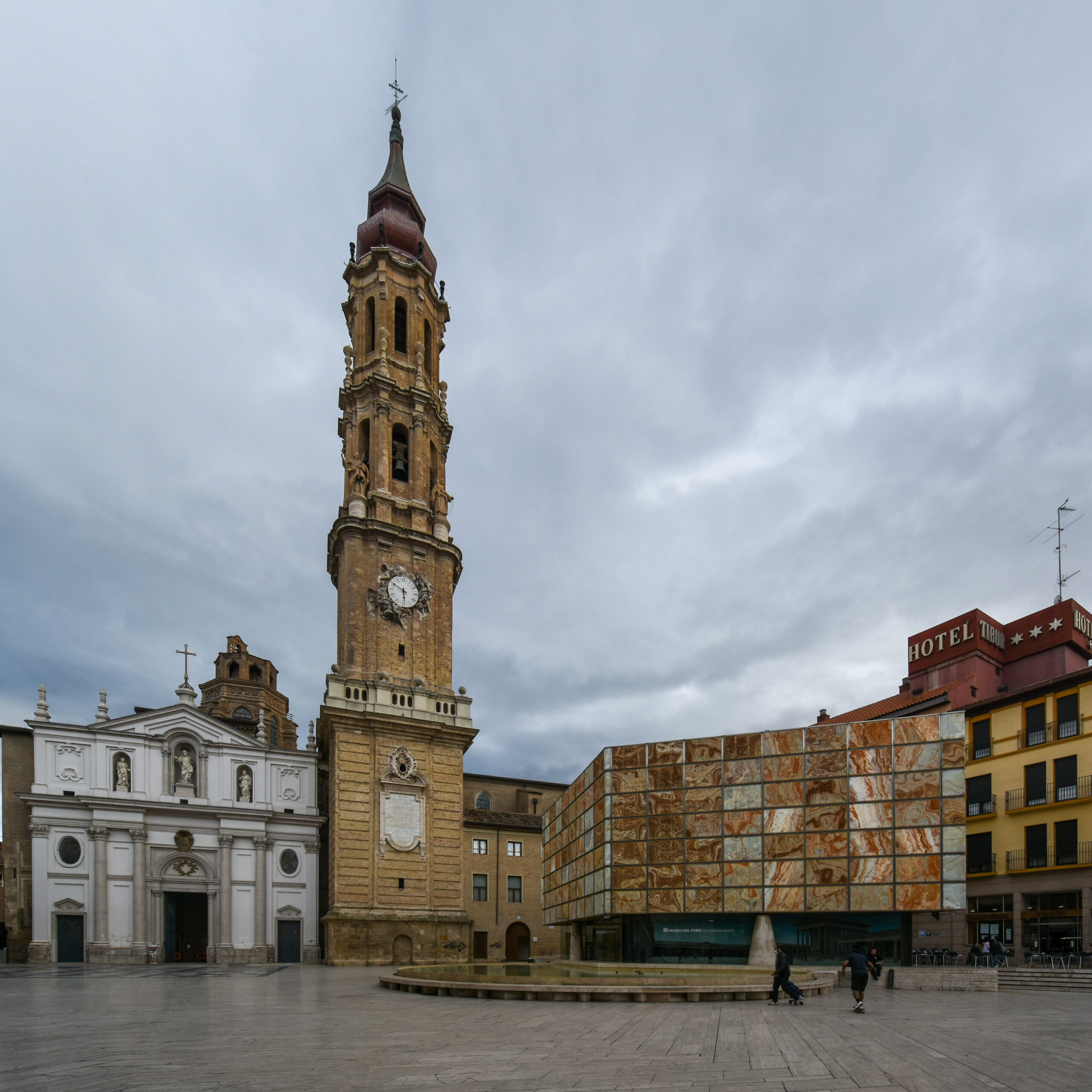
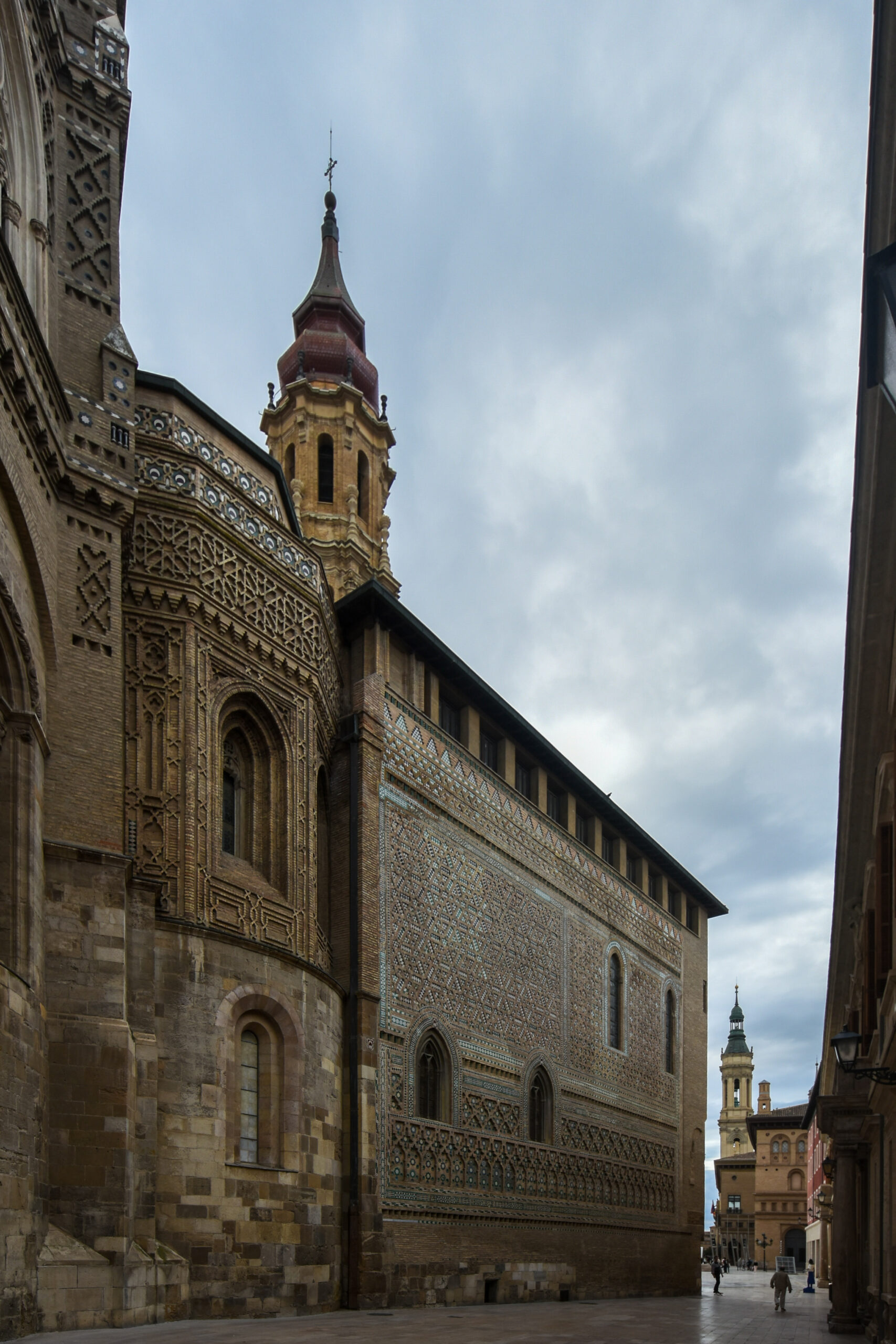
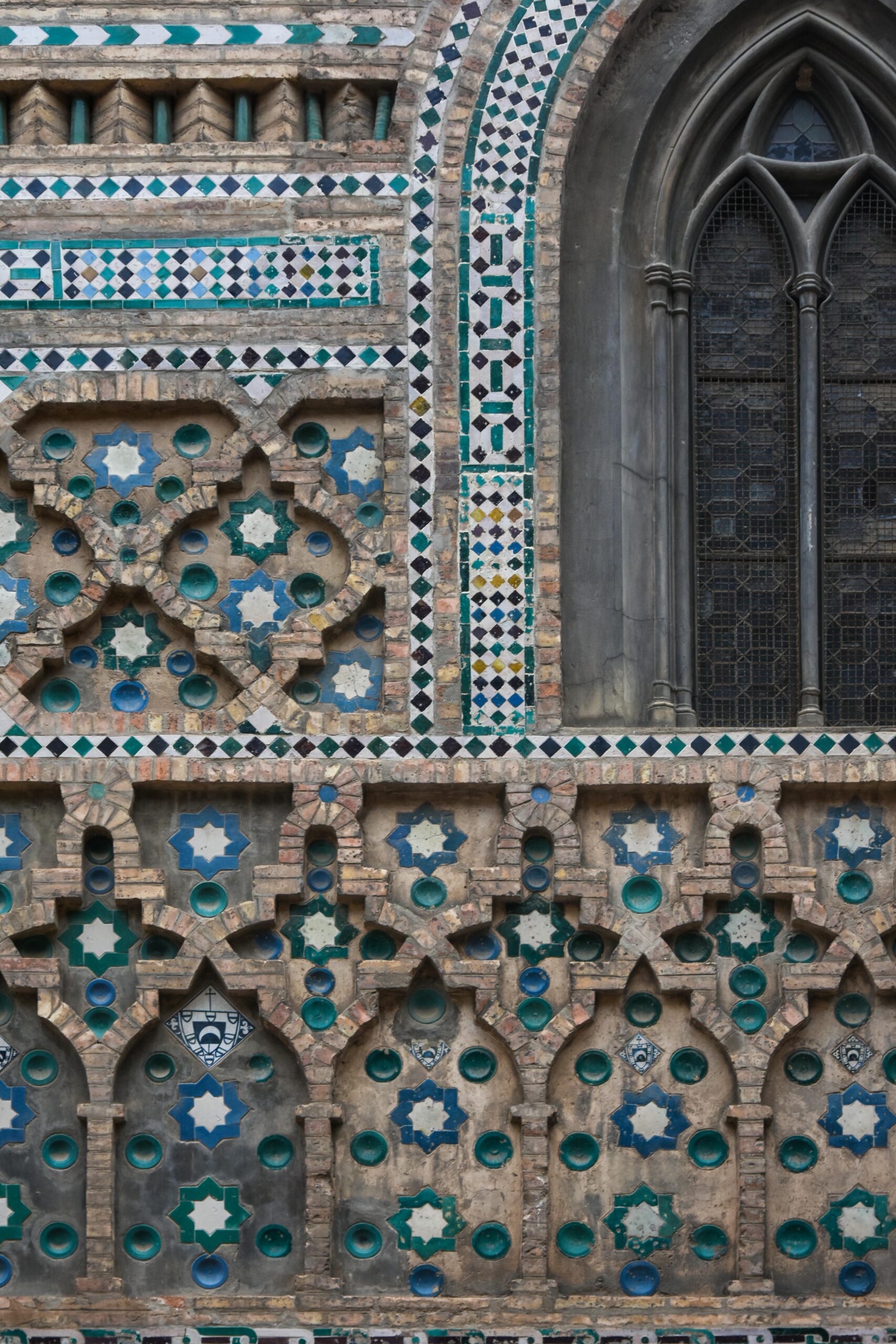


We couldn’t close this first day without going to Ponte de Piedra, from where we can enjoy the most famous view of this city, to the Basilica of Our Lady of Pilar and the river Ebro. We ended up in the picturesque Magdalena district, to drink a caña, before going home for dinner.

The second day started with an adventure. We were going to visit the Aljafería Palace, a reflection of the splendor achieved by the Taifa of Zaragoza at its political and cultural peak. We had a reservation for 11am, we left home in a hurry to arrive on time, and we did. We went to the ticket office to exchange the online reservation for the physical ticket and found that José had made a reservation for three days later, instead of that beautiful day of October… We then changed our reservation to the afternoon and headed to the neighborhood that hosted the Expo of Zaragoza, in 2008. What I really wanted to see was the Pavilion-Bridge, by architect Zaha Hadid, which unfortunately was closed, for structural restoration work. Along the way, we saw the Congress Palace, the Torre del Água (at the moment unused) and the buildings that used to receive the various delegations, and which are now used as office buildings. The exhibition had the theme “Water and sustainable development” and the neighborhood was built along the Ebro, which also allows for a beautiful walk along the river.

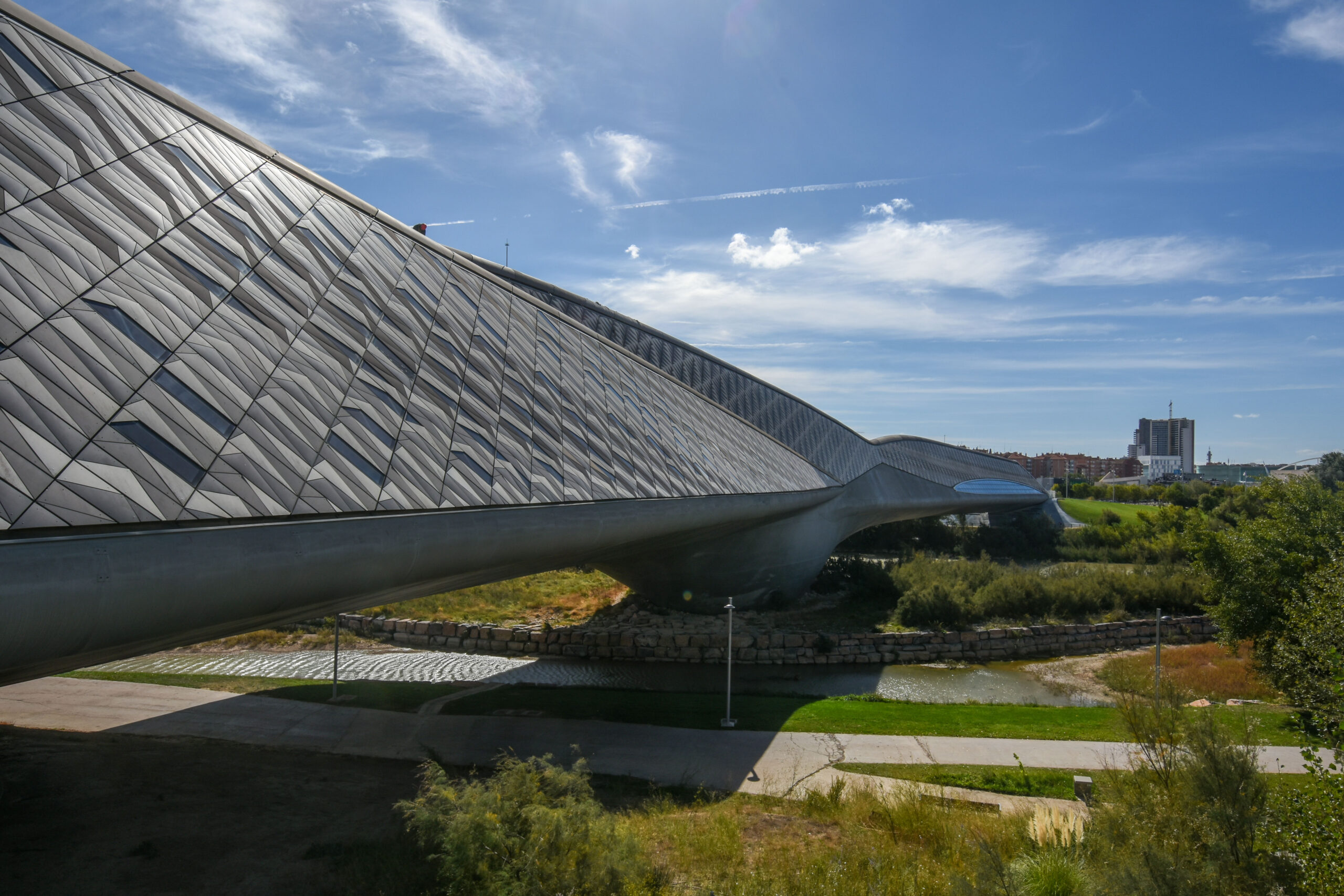






We had to work hours to visit Aljafería and anyway it was all going to close for siesta, so we went to eat some tapas and drink the typical vermouth at Casa Martana, one of those places full of locals, where the food is great and super affordable! There was still time for us to lie down on the lawn around the Palace, before entering to visit, at 4pm.
The Aljafería Palace, a UNESCO World Heritage Site, is the only preserved testimony of a large building of Spanish Islamic architecture from the Taifa period. After the reconquest of Zaragoza, in 1118, it became the residence of the Christian kings of Aragon, and became the main diffuser focus of the Aragonese Mudejar. It was used as a royal residence, including by the Catholic Kings, in 1492. One hundred years later, it was transformed into a military fortress, according to Renaissance designs (which can be seen today in its surroundings, moat and gardens). It suffered continuous reforms, and major damage, especially with the Siege of Zaragoza, in the War of Spanish Independence, until it was finally restored in the second half of the 20th century and currently houses the Courts of Aragon.
Its walls protect a beautiful courtyard, which makes us travel immediately to North Africa. With its profuse decoration, which over time has made it monochromatic, we continue to the various rooms of the palace, whose main interest is the ceilings!











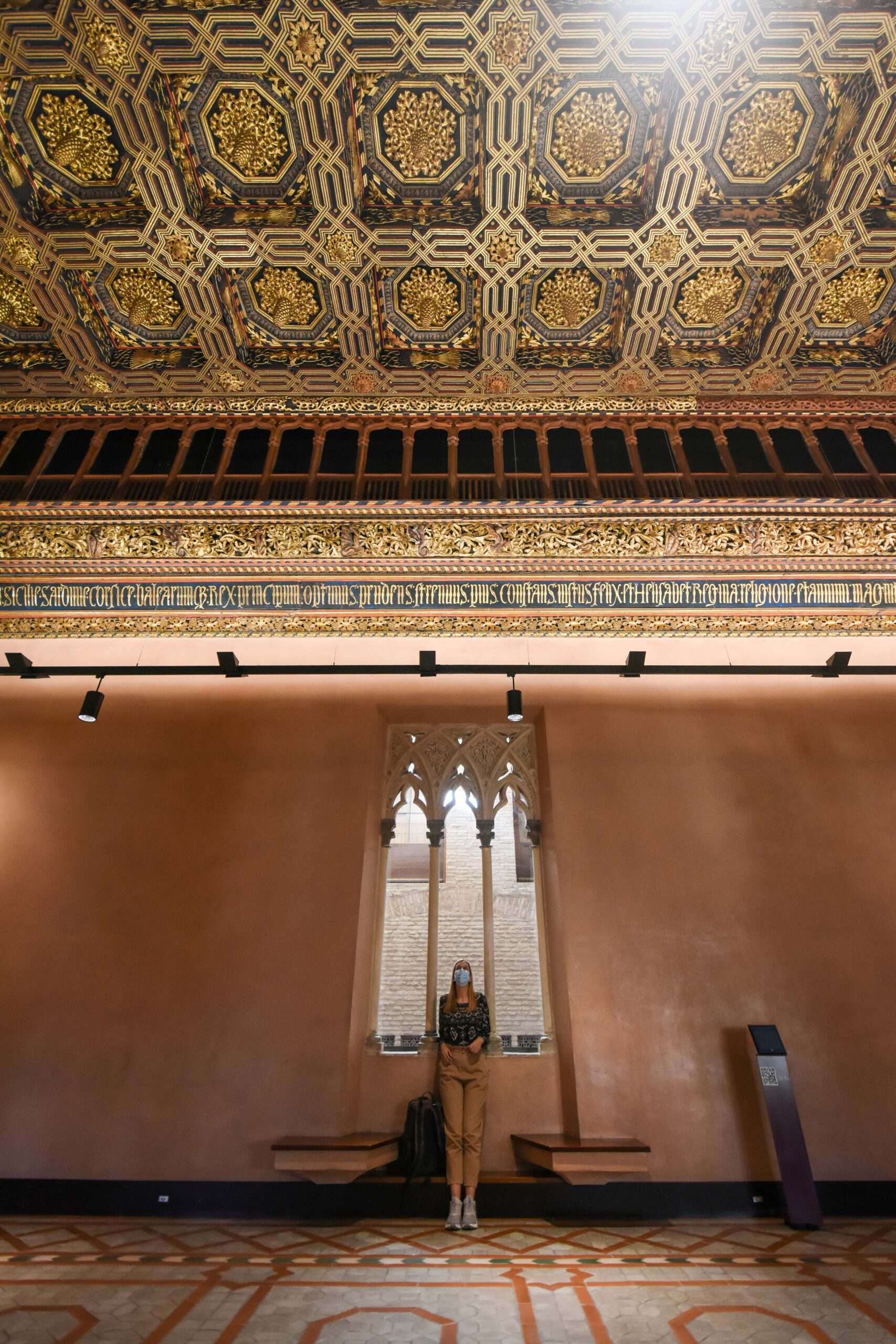
There was still light, so we went to the Church of San Pablo, where we had the right to a guided tour by a classmate of José. This church, although small, is one of the most important in Zaragoza, as it is one of the most representative monuments of the Mudéjar architecture of Aragon, and for this reason, UNESCO declared it a World Heritage Site, together with its tower, which can only be climbed within a guided tour, and from which you have an incredible 360º view of the city!







Once again, we finished the tour at Ponte de Piedra, this time at night and with the Basilica of Our Lady of Pilar illuminated. On the way, we passed the Central Market of Zaragoza, the Roman Walls and the Square of Our Lady of Pilar, with the two most important temples in the city and the Museum of Forums, now with the alabaster lit up.
We still had a drink at El Tubo, one neighborhood which is famous for its bars and for tapas.





On the third and last day visiting Zaragoza, we started at Seo, the Cathedral of the Savior, with the Mudejar façade that I had fallen in love with two days earlier. It is also here that you will find the Museum of Tapestries, included in the ticket to the Cathedral. And for just €1 more, it is possible to climb the Mirador Tower of the Basilica del Pilar.
The visit to Seo also includes an audio-guide, quite complete, which tells the story, from the Roman forum, to the mosque of Saraqusta, whose minaret is still partially integrated in the tower, to the description, chapel by chapel. The interior is super rich and contrasts with the Mudejar exterior and each niche has more detail than the last! The Museum of Tapestries is also unique and unmissable, explained with the same audio guide. Without a doubt, what I most enjoyed visiting in Zaragoza! As for the panoramic view, I liked the one from the day before best, in San Pablo, perhaps because of the difference in light.















The fact that everything closes at lunchtime also gives us the opportunity to go home for lunch and rest for a while, before going out again in the afternoon. On the way to the Provincial Museum of Zaragoza, we passed by the Pateo de la Infanta, at the IberCaja Foundation. This pateo is an Aragonese Renaissance set from the 16th century, which, at a certain point in its history, was dismantled and assembled as it is, in Paris. It was also possible to visit a small collection of rugs there.
The Provincial Museum was a disappointment. The exhibition was very poorly distributed, few pieces, not very interesting, thank goodness it was free!




I had already been to Our Lady of Pilar Square twice and once inside the Basilica, on the first day, but it was very dark, so I promised to come back later to take pictures. It was the last thing I did in Zaragoza. The basilica is strange, it has two entrances, one that gives access to the main altar, but it has hourly masses, which leaves a small window to visit without the service taking place. And another one that gives access to the Saint Chapel, a beautiful example of Baroque, where, behind, we can find the famous Pilar and the Virgin, symbol of the entire Hispanidad (group of countries of Hispanic language and culture). This basilica is, therefore, a sort of Vatican in the Hispanic world, a place of pilgrimage and worship, associated with various miracles.




And so, we returned home, had dinner and prepared for our excursion the next day to Tarazona, a pretty little town with an incredible cathedral, about 90km from Zaragoza.
If you liked this post and want to read more about my trips to Spain, you can visit the following posts:





